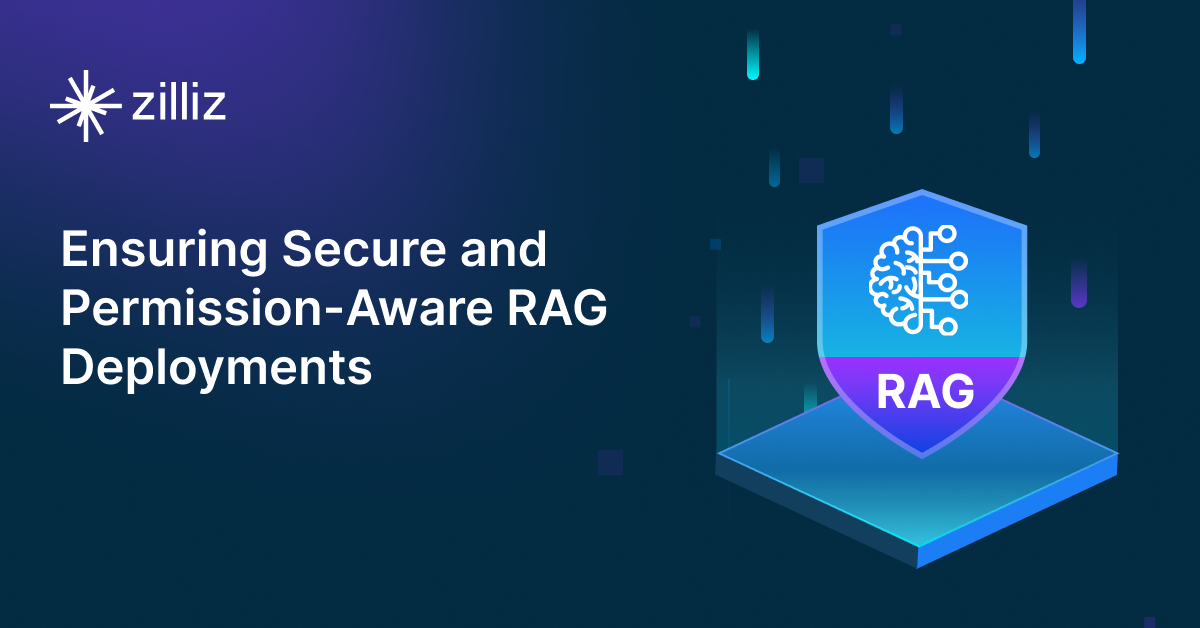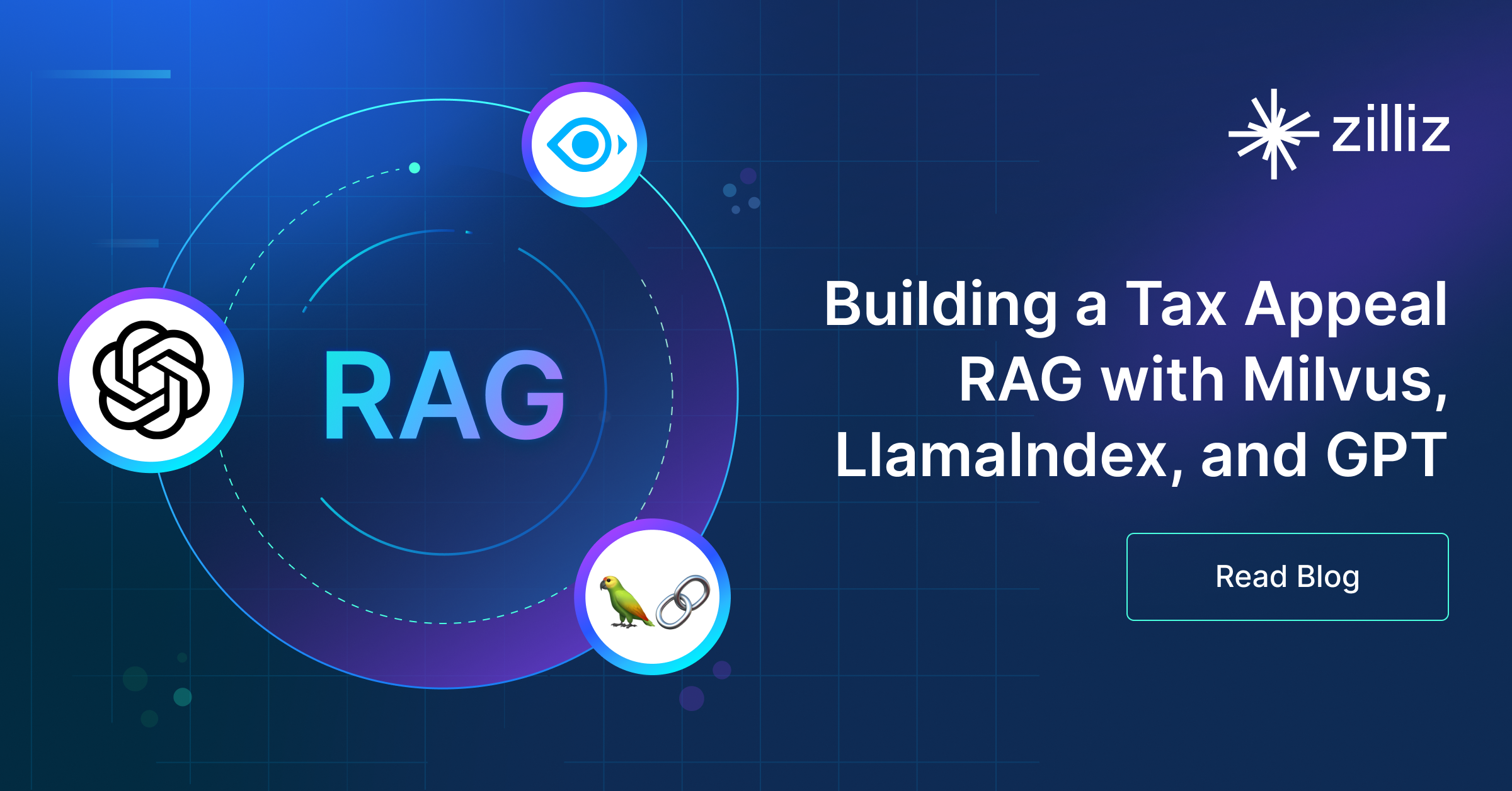Build RAG Chatbot with LangChain, OpenSearch, Google Vertex AI Claude 3.5 Sonnet, and voyage-code-3
Introduction to RAG
Retrieval-Augmented Generation (RAG) is a game-changer for GenAI applications, especially in conversational AI. It combines the power of pre-trained large language models (LLMs) like OpenAI’s GPT with external knowledge sources stored in vector databases such as Milvus and Zilliz Cloud, allowing for more accurate, contextually relevant, and up-to-date response generation. A RAG pipeline usually consists of four basic components: a vector database, an embedding model, an LLM, and a framework.
Key Components We'll Use for This RAG Chatbot
This tutorial shows you how to build a simple RAG chatbot in Python using the following components:
- LangChain: An open-source framework that helps you orchestrate the interaction between LLMs, vector stores, embedding models, etc, making it easier to integrate a RAG pipeline.
- OpenSearch: An open-source search and analytics suite derived from Elasticsearch. It offers robust full-text search and real-time analytics, with vector search available as an add-on for similarity-based queries, extending its capabilities to handle high-dimensional data. Since it is just a vector search add-on rather than a purpose-built vector database, it lacks scalability and availability and many other advanced features required by enterprise-level applications. Therefore, if you prefer a much more scalable solution or hate to manage your own infrastructure, we recommend using Zilliz Cloud, which is a fully managed vector database service built on the open-source Milvus and offers a free tier supporting up to 1 million vectors.)
- Google Vertex AI Claude 3.5 Sonnet: A refined model within the Claude family, designed for advanced natural language understanding and generation. It balances creativity and coherence, making it well-suited for generating high-quality content, engaging chatbots, and sophisticated text analysis. Its versatility and enhanced capabilities make it ideal for enterprises seeking rich interactive experiences.
- Voyage Code 3: This model is designed for advanced code generation and understanding, offering robust capabilities in programming assistance and automated coding tasks. Its strength lies in contextual comprehension and precise syntax generation, making it ideal for developers seeking to enhance productivity through efficient coding solutions and debugging support.
By the end of this tutorial, you’ll have a functional chatbot capable of answering questions based on a custom knowledge base.
Note: Since we may use proprietary models in our tutorials, make sure you have the required API key beforehand.
Step 1: Install and Set Up LangChain
%pip install --quiet --upgrade langchain-text-splitters langchain-community langgraph
Step 2: Install and Set Up Google Vertex AI Claude 3.5 Sonnet
pip install -qU "langchain[google-vertexai]"
# Ensure your VertexAI credentials are configured
from langchain.chat_models import init_chat_model
llm = init_chat_model("claude-3-5-sonnet-v2@20241022", model_provider="google_vertexai")
Step 3: Install and Set Up voyage-code-3
pip install -qU langchain-voyageai
import getpass
import os
if not os.environ.get("VOYAGE_API_KEY"):
os.environ["VOYAGE_API_KEY"] = getpass.getpass("Enter API key for Voyage AI: ")
from langchain-voyageai import VoyageAIEmbeddings
embeddings = VoyageAIEmbeddings(model="voyage-code-3")
Step 4: Install and Set Up OpenSearch
pip install --upgrade --quiet opensearch-py langchain-community
from langchain_community.vectorstores import OpenSearchVectorSearch
opensearch_vector_search = OpenSearchVectorSearch(
"http://localhost:9200",
"embeddings",
embedding_function
)
Step 5: Build a RAG Chatbot
Now that you’ve set up all components, let’s start to build a simple chatbot. We’ll use the Milvus introduction doc as a private knowledge base. You can replace it with your own dataset to customize your RAG chatbot.
import bs4
from langchain import hub
from langchain_community.document_loaders import WebBaseLoader
from langchain_core.documents import Document
from langchain_text_splitters import RecursiveCharacterTextSplitter
from langgraph.graph import START, StateGraph
from typing_extensions import List, TypedDict
# Load and chunk contents of the blog
loader = WebBaseLoader(
web_paths=("https://milvus.io/docs/overview.md",),
bs_kwargs=dict(
parse_only=bs4.SoupStrainer(
class_=("doc-style doc-post-content")
)
),
)
docs = loader.load()
text_splitter = RecursiveCharacterTextSplitter(chunk_size=1000, chunk_overlap=200)
all_splits = text_splitter.split_documents(docs)
# Index chunks
_ = vector_store.add_documents(documents=all_splits)
# Define prompt for question-answering
prompt = hub.pull("rlm/rag-prompt")
# Define state for application
class State(TypedDict):
question: str
context: List[Document]
answer: str
# Define application steps
def retrieve(state: State):
retrieved_docs = vector_store.similarity_search(state["question"])
return {"context": retrieved_docs}
def generate(state: State):
docs_content = "\n\n".join(doc.page_content for doc in state["context"])
messages = prompt.invoke({"question": state["question"], "context": docs_content})
response = llm.invoke(messages)
return {"answer": response.content}
# Compile application and test
graph_builder = StateGraph(State).add_sequence([retrieve, generate])
graph_builder.add_edge(START, "retrieve")
graph = graph_builder.compile()
Test the Chatbot
Yeah! You've built your own chatbot. Let's ask the chatbot a question.
response = graph.invoke({"question": "What data types does Milvus support?"})
print(response["answer"])
Example Output
Milvus supports various data types including sparse vectors, binary vectors, JSON, and arrays. Additionally, it handles common numerical and character types, making it versatile for different data modeling needs. This allows users to manage unstructured or multi-modal data efficiently.
Optimization Tips
As you build your RAG system, optimization is key to ensuring peak performance and efficiency. While setting up the components is an essential first step, fine-tuning each one will help you create a solution that works even better and scales seamlessly. In this section, we’ll share some practical tips for optimizing all these components, giving you the edge to build smarter, faster, and more responsive RAG applications.
LangChain optimization tips
To optimize LangChain, focus on minimizing redundant operations in your workflow by structuring your chains and agents efficiently. Use caching to avoid repeated computations, speeding up your system, and experiment with modular design to ensure that components like models or databases can be easily swapped out. This will provide both flexibility and efficiency, allowing you to quickly scale your system without unnecessary delays or complications.
OpenSearch optimization tips
To optimize OpenSearch in a Retrieval-Augmented Generation (RAG) setup, fine-tune indexing by enabling efficient mappings and reducing unnecessary stored fields. Use HNSW for vector search to speed up similarity queries while balancing recall and latency with appropriate ef_search and ef_construction values. Leverage shard and replica settings to distribute load effectively, and enable caching for frequent queries. Optimize text-based retrieval with BM25 tuning and custom analyzers for better relevance. Regularly monitor cluster health, index size, and query performance using OpenSearch Dashboards and adjust configurations accordingly.
Google Vertex AI Claude 3.5 Sonnet optimization tips
Claude 3.5 Sonnet on Google Vertex AI provides a strong balance between speed and depth. Improve retrieval by implementing intelligent reranking techniques that prioritize high-relevance documents. Structure prompts efficiently, with a logical flow to guide the model’s response. Keep temperature settings around 0.1–0.3, adjusting top-k and top-p to fine-tune diversity and precision. Leverage Google’s AI infrastructure for auto-scaling and load balancing to maintain optimal performance. Caching frequently used queries can reduce latency and API costs. In a multi-model deployment, assign Sonnet to handle general-purpose queries while reserving Opus for the most complex requests.
voyage-code-3 optimization tips
voyage-code-3 is designed for code generation and understanding, making structured input crucial for optimal RAG performance. Improve retrieval by using high-quality code embeddings and semantic search techniques to surface the most relevant code snippets. Keep prompts well-organized, clearly specifying requirements, constraints, and relevant context. Adjust temperature settings (0.1–0.3) to control creativity versus precision in generated code. Implement response caching for frequently accessed functions and common coding patterns to reduce processing time. Utilize batch processing and token-efficient formatting to optimize resource usage. If integrating multiple models, use voyage-code-3 for generating complex code solutions while reserving smaller models for lightweight code completions and explanations.
By implementing these tips across your components, you'll be able to enhance the performance and functionality of your RAG system, ensuring it’s optimized for both speed and accuracy. Keep testing, iterating, and refining your setup to stay ahead in the ever-evolving world of AI development.
RAG Cost Calculator: A Free Tool to Calculate Your Cost in Seconds
Estimating the cost of a Retrieval-Augmented Generation (RAG) pipeline involves analyzing expenses across vector storage, compute resources, and API usage. Key cost drivers include vector database queries, embedding generation, and LLM inference.
RAG Cost Calculator is a free tool that quickly estimates the cost of building a RAG pipeline, including chunking, embedding, vector storage/search, and LLM generation. It also helps you identify cost-saving opportunities and achieve up to 10x cost reduction on vector databases with the serverless option.
 Calculate your RAG cost
Calculate your RAG cost
What Have You Learned?
By diving into this tutorial, you’ve unlocked the power of combining cutting-edge tools to create a fully functional RAG system! You learned how LangChain acts as the glue that ties everything together, orchestrating workflows between your data, models, and user interactions. With OpenSearch as your vector database, you can efficiently store and retrieve embeddings generated by the voyage-code-3 model, which transforms text into rich numerical representations that capture semantic meaning. Then, Google Vertex AI’s Claude 3.5 Sonnet steps in as the LLM powerhouse, leveraging those retrieved contexts to generate precise, human-like answers. The tutorial showed you how these pieces fit seamlessly into a pipeline—starting with data ingestion, moving through embedding generation and vector storage, and culminating in intelligent query responses. You even got a taste of optimization strategies, like tuning OpenSearch’s indexing settings or balancing cost-performance tradeoffs for real-world scalability. Plus, the free RAG cost calculator you explored empowers you to estimate expenses upfront, making your projects more budget-friendly and sustainable.
Now that you’ve seen how to bring these tools to life, the real magic begins! You’re equipped to build chatbots that answer like experts, research assistants that sift through mountains of data, or creative tools that blend knowledge with imagination. The tutorial gave you not just code snippets but a mindset—experiment with hybrid search strategies, tweak Claude’s prompts for sharper outputs, or explore voyage-code-3’s multilingual prowess. Remember, every optimization you apply and every query you refine pushes your RAG system closer to its full potential. So fire up your IDE, load up your datasets, and start creating. The future of AI-powered applications is waiting for your unique twist. Build fearlessly, iterate joyfully, and share what you create—the world needs more innovators like you! 🚀
Further Resources
🌟 In addition to this RAG tutorial, unleash your full potential with these incredible resources to level up your RAG skills.
- How to Build a Multimodal RAG | Documentation
- How to Enhance the Performance of Your RAG Pipeline
- Graph RAG with Milvus | Documentation
- How to Evaluate RAG Applications - Zilliz Learn
- Generative AI Resource Hub | Zilliz
We'd Love to Hear What You Think!
We’d love to hear your thoughts! 🌟 Leave your questions or comments below or join our vibrant Milvus Discord community to share your experiences, ask questions, or connect with thousands of AI enthusiasts. Your journey matters to us!
If you like this tutorial, show your support by giving our Milvus GitHub repo a star ⭐—it means the world to us and inspires us to keep creating! 💖
- Introduction to RAG
- Key Components We'll Use for This RAG Chatbot
- Step 1: Install and Set Up LangChain
- Step 2: Install and Set Up Google Vertex AI Claude 3.5 Sonnet
- Step 3: Install and Set Up voyage-code-3
- Step 4: Install and Set Up OpenSearch
- Step 5: Build a RAG Chatbot
- Optimization Tips
- RAG Cost Calculator: A Free Tool to Calculate Your Cost in Seconds
- What Have You Learned?
- Further Resources
- We'd Love to Hear What You Think!
Content
Vector Database at Scale
Zilliz Cloud is a fully-managed vector database built for scale, perfect for your RAG apps.
Try Zilliz Cloud for Free


